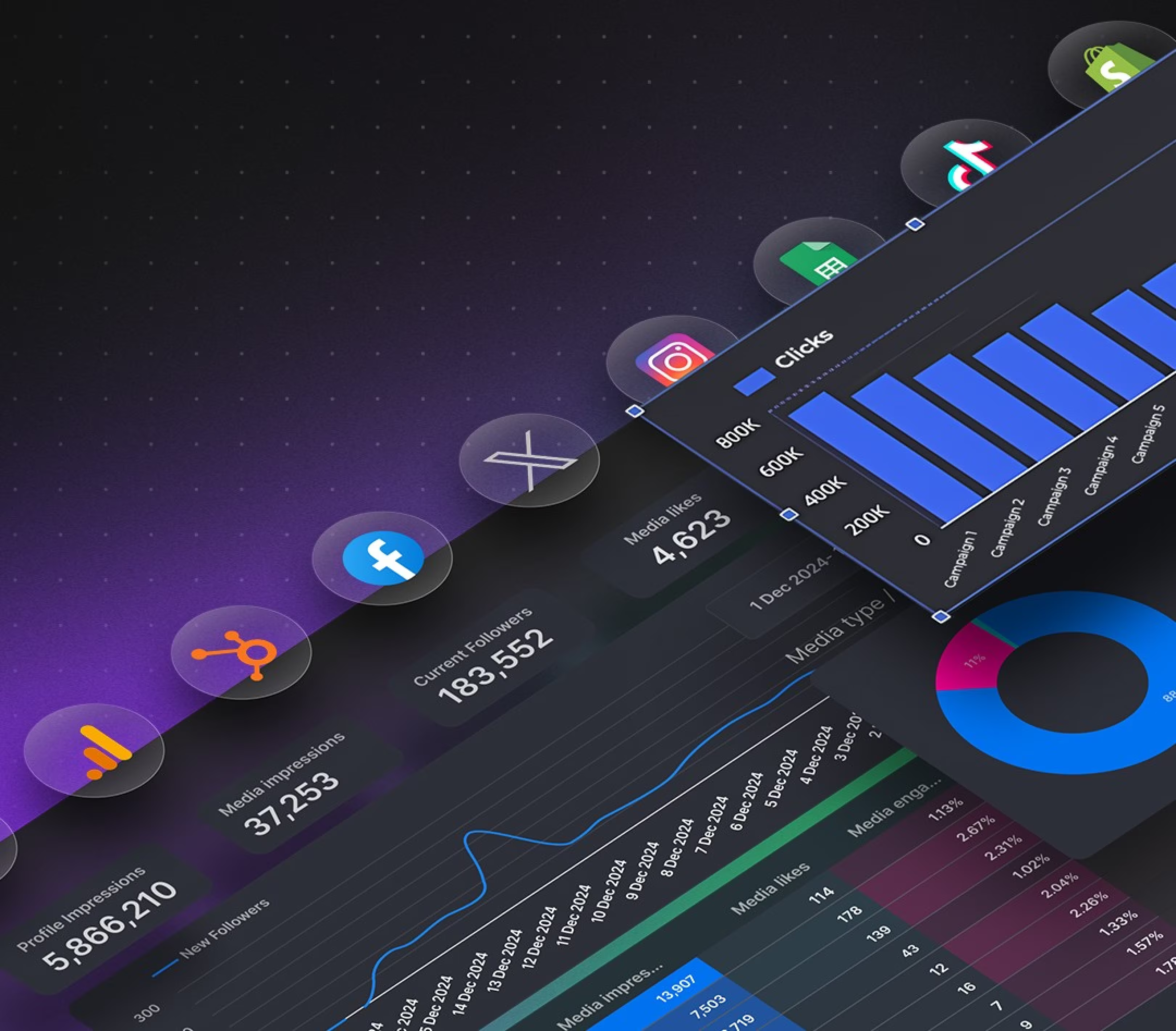Marketing data privacy has evolved from a compliance checkbox into a core operational requirement. Regulators worldwide now enforce strict rules around consent, cookies, tracking pixels, and data retention—with penalties reaching millions. This guide covers the frameworks you need to understand (GDPR, CCPA/CPRA, US state laws), what triggers enforcement, and how to build compliant marketing operations without sacrificing performance.
Understanding the Three Privacy Frameworks
Modern marketing operates under three overlapping regulatory systems:
- GDPR (European Union) - Requires prior opt-in consent for marketing cookies and tracking. Applies to any business processing data of EU residents, regardless of company location. Maximum penalties: €20 million or 4% of annual revenue, whichever is higher.
- CCPA/CPRA (California) - Uses an opt-out model where tracking is permitted by default, but consumers have extensive rights to stop data selling/sharing. Must honor browser-based signals like Global Privacy Control. Penalties: up to $7,500 per intentional violation.
- US State Laws - Growing number of states following California's model with variations. Most require businesses to honor universal opt-out mechanisms and provide similar consumer rights (access, deletion, correction).
Key Differences That Matter for Marketers
What Triggers Enforcement: The Common Violations
Enforcement patterns reveal what regulators actually care about:
1. Cookie consent failures
- Setting cookies before consent is granted
- Pre-checked consent boxes
- "Accept All" prominent but "Reject All" hidden or absent
- Dark patterns that manipulate user choice
- Consent banners that claim no cookies but actually set them
2. Ignoring opt-out signals
- Not recognizing Global Privacy Control (GPC) browser settings
- Continuing to track after user opts out
- Failing to suppress opted-out users from remarketing audiences
3. Inadequate privacy disclosures
- Vague privacy policies ("we may collect information")
- Missing data retention periods
- Not listing specific third parties receiving data
- No clear "Do Not Sell" mechanisms (for CCPA states)
4. Marketing to children without proper consent
- Targeted advertising to minors
- Collecting children's data without parental consent
- Age verification failures
5. Cross-border data transfers without safeguards
- Sending EU user data to US/China without proper agreements
- Using vendors that don't comply with data protection standards
6. Excessive data retention
- Keeping customer data indefinitely "just in case"
- No documented retention policies
- Failing to delete data upon request
2025 Updates: What's New This Year
US State Law Expansion
The compliance landscape expanded significantly in 2025. Twenty states now have comprehensive privacy laws in effect, covering nearly 150 million Americans—43% of the US population.
- January 1, 2025: Five states activated laws—Delaware, Iowa, Nebraska, New Hampshire, and New Jersey.
- Mid-2025: Tennessee (July 1), Minnesota (July 31), and Maryland (October 1) joined.
- Coming January 1, 2026: Indiana, Kentucky, and Rhode Island.
- Maryland's strict approach: Prohibits targeted advertising to anyone under 18 and bans selling sensitive personal data. Limits data collection to what's "reasonably necessary and proportionate"—the highest bar yet.
GDPR Enforcement Intensity
GDPR enforcement reached €5.88 billion in cumulative fines since 2018, with €1.2 billion issued in 2024 alone. Regulators expanded focus beyond Big Tech to ordinary businesses.
Recent marketing penalties:
- TikTok: €530 million (2025) - Cross-border data transfers to China
- Google: €200 million (2025) - Disguised ads as emails without consent
- SHEIN: €150 million (2025) - Cookie consent violations
California's Harder Stance
The California Privacy Protection Agency ended the 30-day cure period December 31, 2024. Violations now result in immediate penalties. January 2025 also brought inflation-adjusted fines:
- Unintentional: $2,664 per violation
- Intentional: $7,988 per violation
March 2025 "investigative sweep" targeted geolocation data collection by ad networks and mobile publishers.
How Privacy Laws Affect Your Marketing Tools
Every tool in your martech stack must respect privacy regulations. Here's what compliance actually requires:
Tracking Pixels & Analytics
The requirement: No tracking pixels or analytics cookies can fire before obtaining proper consent/honoring opt-outs.
What this means:
- Under GDPR: Block all non-essential cookies until explicit opt-in
- Under CCPA/state laws: Honor Global Privacy Control (GPC) signals and provide opt-out mechanisms
- Testing: Use Privacy Badger or GPC browser extensions to verify pixels don't fire when disabled
Tools affected:
- Facebook Pixel / Meta Pixel
- Google Analytics / GA4
- LinkedIn Insight Tag
- TikTok Pixel
- Third-party attribution platforms
Solution: Deploy a Consent Management Platform (CMP) that blocks scripts client-side until consent is granted. Implement Google Consent Mode v2 to maintain measurement capabilities when consent is denied (uses modeled data instead of individual tracking).

Email Marketing Platforms
The requirement: Marketing emails require explicit, documented consent with easy opt-out.
Compliance essentials:
- Double opt-in is the standard (confirmation email after initial signup)
- Consent must be specific: "I agree to receive marketing emails" not buried in terms and conditions
- Automated suppression lists that sync across all platforms instantly
- Maintain consent records with timestamps, source, and IP address
- Honor unsubscribes within 10 business days (CAN-SPAM) or immediately (GDPR)
Common mistake: Pre-checked boxes or implicit consent ("by signing up, you agree to receive emails"). GDPR requires unchecked boxes and affirmative action.
Remarketing & Targeted Advertising
The shift: Legitimate interest no longer justifies behavioral advertising under GDPR. Personalized advertising based on user behavior requires explicit consent.
What needs consent:
- Facebook Custom Audiences (pixel-based or uploaded lists)
- Google Ads remarketing lists
- LinkedIn Matched Audiences
- Any cross-site behavioral targeting
- Third-party data enrichment
Alternative approaches:
- Contextual advertising (target based on current page content, not browsing history)
- First-party data segments (target based on direct customer relationship)
- Cohort-based approaches (Google's Privacy Sandbox initiatives)
Special restrictions: Some states prohibit targeted advertising to minors regardless of consent (Maryland: under 18, California: under 16 for selling data).
Building a Compliant Marketing Operation
Moving beyond reactive fixes to systematic compliance:
1. Consent Infrastructure
Implement proper consent collection:
- Deploy a Consent Management Platform (CMP) that blocks scripts until permission
- Ensure "Reject All" is as prominent as "Accept All"
- Use granular categories (Essential, Analytics, Marketing, Social)
- Geo-target banners (EU users need opt-in, US users need opt-out capabilities)
- Test in incognito mode to verify blocking works
GPC compliance for applicable states:
- Detect GPC browser signals automatically
- Treat GPC as valid opt-out for data selling/sharing
- Block advertising pixels when GPC is enabled
- Test with GPC browser extension
2. Data Inventory & Mapping
Know what you're collecting:
- Document every data point collected (email, IP address, device ID, behavior data)
- Map data flows: which tools receive data, where it's stored, who has access
- Identify third parties receiving user data
- Categorize data by sensitivity (personal, sensitive, children's data)
Vendor management:
- Maintain list of all marketing technology vendors
- Ensure Data Processing Agreements (DPAs) are in place
- Verify vendors can honor consumer opt-out requests
- Review vendor security practices annually
3. Privacy Documentation
Create and maintain:
- Privacy policy listing specific data collected, retention periods, third parties, and consumer rights
- Cookie policy detailing each cookie's purpose and duration
- Data retention policy with documented timelines per data type
- Vendor agreements with privacy clauses
- Consent records with timestamps and sources
Update triggers:
- New data collection activities
- New marketing tools or vendors
- Changes to data use or sharing
- New jurisdictions covered
- Annual review minimum
4. Consumer Rights Workflows
Build processes to handle:
- Access requests - provide copy of all data within 45 days
- Deletion requests - remove data from all systems within 30-45 days
- Correction requests - fix inaccurate data promptly
- Opt-out requests - stop data selling/sharing immediately
- Portability requests - provide data in machine-readable format (GDPR)
Requirements:
- Verify requestor identity (but don't over-collect data to do so)
- No charge for reasonable requests
- Track all requests with dates and resolutions
- Provide appeal process if requests denied
5. Data Retention & Deletion
Implement retention schedules:
- Email consent: Until unsubscribe (verify interest annually)
- Cookie consent: 12 months, then re-prompt
- Analytics data: 26-38 months maximum
- Campaign data: 90 days to 12 months based on sales cycle
- Inactive accounts: Delete after 2-3 years of no activity
Automate deletion:
- Schedule jobs to purge expired data
- Remove data from backups according to schedule
- Document deletion in case of audit
Practical Compliance Strategies
Strategy 1: Highest Common Denominator Approach
Rather than managing requirements across 20+ jurisdictions, implement the strictest standard everywhere. If you meet GDPR and California requirements, you typically satisfy other state laws.
Benefits:
- Simpler operations (one process, not 20)
- Lower engineering costs
- Better user trust (consistent experience)
- Future-proof against new laws
Implementation:
- GDPR-style opt-in for cookies globally
- Honor GPC signals everywhere (not just required states)
- Provide all consumer rights to everyone
- Use strictest retention periods
Strategy 2: First-Party Data Focus
With third-party cookies disappearing and consent requirements tightening, own your customer relationships:
Tactics:
- Encourage account creation/registration
- Offer value exchange for data (exclusive content, discounts, personalization)
- Use progressive profiling (collect data over time, not all at once)
- Make consent benefits clear: "Get recommendations" beats "We'll track you"
Advantages:
- Higher quality data (directly from customer)
- Better consent rates (clear value exchange)
- No third-party dependencies
- Immune to cookie deprecation
Strategy 3: Contextual Over Behavioral
Contextual advertising—targeting based on current page content rather than browsing history—avoids most consent requirements:
How it works:
- Ad appears on recipe blog → show cooking products
- Article about hiking → outdoor gear ads
- Finance news → investment services
Benefits:
- No cookies or cross-site tracking needed
- Respects user privacy by default
- Often performs surprisingly well (relevant to current intent)
- Lower compliance burden
Limitations:
- Less precise than behavioral targeting
- Can't retarget cart abandoners
- Doesn't leverage historical engagement
Strategy 4: Server-Side Tracking
Move tracking from browser (client-side) to your servers (server-side):
Why this helps:
- Less affected by ad blockers and cookie restrictions
- You control what data is sent to advertising platforms
- Can respect opt-outs before data leaves your infrastructure
- Better data quality and accuracy
Implementation:
- Facebook Conversions API (server-side alternative to pixel)
- Google Analytics 4 Measurement Protocol
- TikTok Events API
- Custom server-to-server integrations
Note: You still need consent before collecting data—this just changes where processing happens.
Strategy 5: Privacy as Brand Differentiator
Instead of treating privacy as pure compliance burden, make it a competitive advantage:
Messaging:
- "We respect your data choices"
- "No selling your information, ever"
- "Your data, your control"
- Highlight certifications (SOC 2, ISO 27701)
Actions:
- Go beyond minimum requirements
- Make privacy controls easy to find and use
- Be transparent about what you do with data
- Default to privacy-friendly settings
Results: Higher trust, better consent rates, stronger customer relationships, premium brand positioning.

FAQ: Common Privacy Compliance Questions
Q: Do privacy laws apply if my business isn't in that jurisdiction?
A: Yes—privacy laws apply based on where your users are located, not where your business is registered. If you're collecting data from California residents through your website, you're subject to CCPA/CPRA regardless of headquarters location. The same applies for GDPR (EU residents) and other state laws.
Thresholds vary by jurisdiction. California applies if you meet any of: $25M+ annual revenue, process data of 100,000+ consumers, or derive 50%+ revenue from selling personal information. Most states have similar thresholds. If you operate a consumer-facing website collecting emails, cookies, or other personal data, assume you're covered.
Q: Can I use "legitimate interest" for marketing cookies?
A: No, not under GDPR. European data protection authorities are clear: legitimate interest does not justify analytics or marketing cookies. These require explicit opt-in consent.
Legitimate interest may apply to some data processing (fraud prevention, internal security), but it cannot justify third-party tracking, behavioral advertising, or most marketing pixels. Under GDPR, if you're placing cookies for marketing, you need consent.
Q: What is Global Privacy Control and do I need it?
A: GPC is a browser-level opt-out signal that's legally binding in multiple US states. Global Privacy Control tells websites "this user opts out of data selling/sharing."
States requiring GPC support:
- California
- Colorado
- Connecticut
- Delaware
- Minnesota
- Nebraska
- New Hampshire
- New Jersey
- (More states adopting ongoing)
When a user visits with GPC enabled, you must block advertising pixels, suppress from remarketing, and not share data with third parties for behavioral advertising. If pixels fire when GPC is enabled, you're violating multiple state laws.
Q: How long can I keep marketing data?
A: Only as long as necessary for the stated purpose—typically 12-24 months maximum. Data minimization is a core principle across GDPR, CCPA, and most privacy laws.
Reasonable retention periods:
- Email opt-ins: Until unsubscribe (verify interest annually via re-engagement)
- Cookie consent: 12 months, then re-prompt
- Analytics data: 26-38 months (GA4 default is 26)
- Campaign performance: 90 days to 12 months based on sales cycle
- Inactive customer data: 2-3 years maximum
If you're holding years of inactive customer data "just in case," you're likely non-compliant. Document your retention policies and automate deletion.
Q: Are Consent Management Platforms required by law?
A: Not technically, but practically essential for modern websites. Laws don't mandate specific technologies, but they require that you:
- Block non-essential cookies until consent
- Record and store consent decisions
- Honor opt-out preferences across your tech stack
- Provide easy consent withdrawal
Doing this manually for a website with 10-30 different tracking scripts is nearly impossible. CMPs automate:
- Scanning for cookies/trackers
- Blocking scripts client-side until consent
- Maintaining audit logs
- Integrating with ad platforms to pass consent signals
Most businesses with any marketing technology beyond basic analytics need a CMP.
Q: How does privacy compliance affect marketing reporting?
A: You'll have incomplete data—but that's the point. When users opt out or enable privacy controls, you lose visibility into their behavior. This affects conversion attribution, audience insights, A/B test validity, and ROI calculations.
Strategies to maintain reporting quality:
- Use server-side tracking where possible (Conversions API, measurement protocols)
- Implement Google Consent Mode v2 for modeled data when consent is denied
- Focus on aggregate trends rather than individual user paths
- Collect first-party data through authenticated experiences
- Build automated reporting that consolidates multiple data sources
When pulling data from multiple platforms into centralized dashboards, automation saves significant time. Marketing teams report reducing manual reporting work by 80%+ through automated data workflows.
Q: What should I do if I receive an enforcement notice?
A: Respond quickly and professionally—don't ignore it. Most enforcement begins with a notice giving 14-30 days to explain practices and demonstrate compliance efforts.
Effective response strategy:
- Acknowledge specific violations named in the notice
- Document immediate fixes (consent banner updates, policy changes, pixel blocking)
- Show compliance roadmap with realistic timelines
- Demonstrate good faith through detailed, professional responses
Attorney Generals and Data Protection Authorities prefer collaboration over litigation. Businesses that get fined are those that ignore notices, provide evasive responses, or fail to fix issues. Engage constructively, show technical fixes, and demonstrate compliance intent.
The Path Forward
Marketing data privacy has evolved from optional best practice to mandatory operational requirement. The regulatory landscape will continue expanding—more states, more countries, stricter enforcement. But compliant marketing isn't the same as ineffective marketing.
Winning companies:
- Treat privacy as a competitive differentiator, not a burden
- Build consent infrastructure proactively rather than reactively
- Shift toward first-party data relationships that customers value
- Document every compliance decision systematically
- Make privacy controls easy to understand and use
The brands that build trust through transparent data practices earn higher engagement rates, better opt-in percentages, and customer loyalty that compounds over time. Privacy-first marketing is simply good marketing.
Need centralized marketing reporting? Dataslayer connects advertising platforms, analytics tools, and CRMs to Google Sheets, Looker Studio, BigQuery, and Power BI—consolidating campaign data from 50+ sources into unified dashboards. Try free for 15 days.







